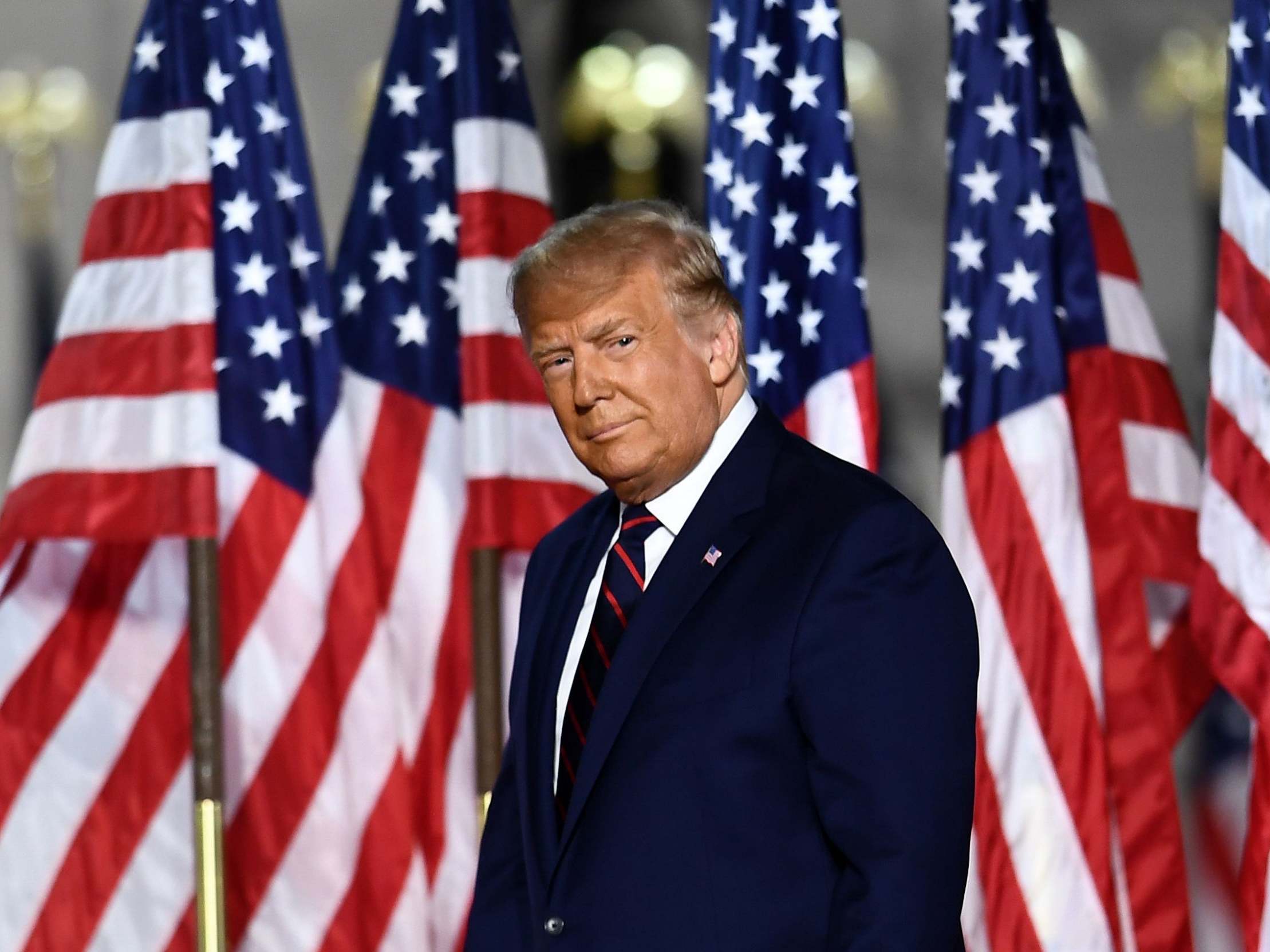Who’s winning the race for the White House?
The polls suggest Trump is facing an uphill battle to retain the White House – but, Sean O'Grady writes, there are plenty of reasons why it would be foolish to write him off just yet


Whatever “bounce” he enjoys from this week’s convention, President Trump is facing a struggle to win the election and secure his second term in office. On the face of it, Donald Trump may as well write his concession speech now (assuming he could physically undertake an act so against his nature). Joe Biden has such an impressive lead in the national opinion polls that it is difficult to see how it could be overhauled.
Biden’s average national poll lead is around 8.3 percentage points, against, say, the 4.3 per cent lead Hillary Clinton boasted in the summer of 2016. Biden’s best showing is a 10.2 per cent lead (versus 7.9 per cent for Hillary). No feasible amount of localised strength in voting in swing states could overcome such a weight of opinion. (Figures are from Real Clear Politics.)
Yet it is more complicated than that, of course, and Democrats and Republicans alike know there is much still to play for in this strangest of election years.
It absolutely is true that the race is tighter in the swing states than nationally. What’s more, contrary to the national picture, in some states Biden’s leads are actually smaller than those Hillary built, for a while, four years ago. US political commentator and Republican adviser Frank Luntz has pointed out these uncomfortable comparisons of the Democrats’ showing in some of the closer contests:
Pennsylvania
2016 Hillary +9.2 percentage points
2020 Biden +5.7
Michigan
2016 Hillary +9.0
2020 Biden +6.7
Wisconsin
2016 Hillary +11.5
2020 Biden +6.5
Florida
2016 Hillary +2.9
2020 Biden +4.8
If today was polling day, Trump would be out, but it isn’t and much can change between now and November. As 2016 and many other precedents show, the campaigns matter and there can be surprises and upsets. There are reasons to think Trump could make up more ground as the weeks wear on.
First, he did exactly that in 2016, and he seems to enjoy the prospect of a fight from behind, a sort of insurgency even though Trump is now the incumbent. In his mind, at any rate, he is still fighting against the “swamp”. He may not be the stable genius he claims to be, but he possesses a low instinctive cunning, and loves a street brawl.
Second, even more speculatively, the Covid crisis might ease, and start to appear in America’s rear view mirror. Its mismanagement has been a negative for Trump, but it will be less relevant for the next four years if it is thought to be over (hence also the rush for a vaccine).
Law and order is the third factor. Again thus hard to predict, but Trump and Mike Pence have a simple and powerful message, copying the Richard Nixon playbook in the similarly traumatic and racially charged election season of 1968 (though the parallels are far from precise).
Last there is the economy, hit hard by the effects of Covid, but with stock markets apparently defying gravity, and with them the value of middle class savings and pension pots.
There is no determinism here, though. A series of characteristic gaffes and misjudgements by the president could easily make the Biden-Harris lead even larger, and propel them to a decisive result, one immune from any Trump legal challenges.
Yet we also know that the Trump base is extremely loyal. Though not substantial enough to guarantee victory, it also insulated Trump from the risk of a meltdown of support and any kind of nosedive. Don’t forget either that opinion polls can get it wrong. What if some Trump supporters are too shy/embarrassed/ashamed to admit their allegiance, but go ahead and vote for him anyway?
One way or another, and with all the headline-grabbing advantages of incumbency, Trump will be in with a chance in those swing states right up until polling day.
Join our commenting forum
Join thought-provoking conversations, follow other Independent readers and see their replies
Comments